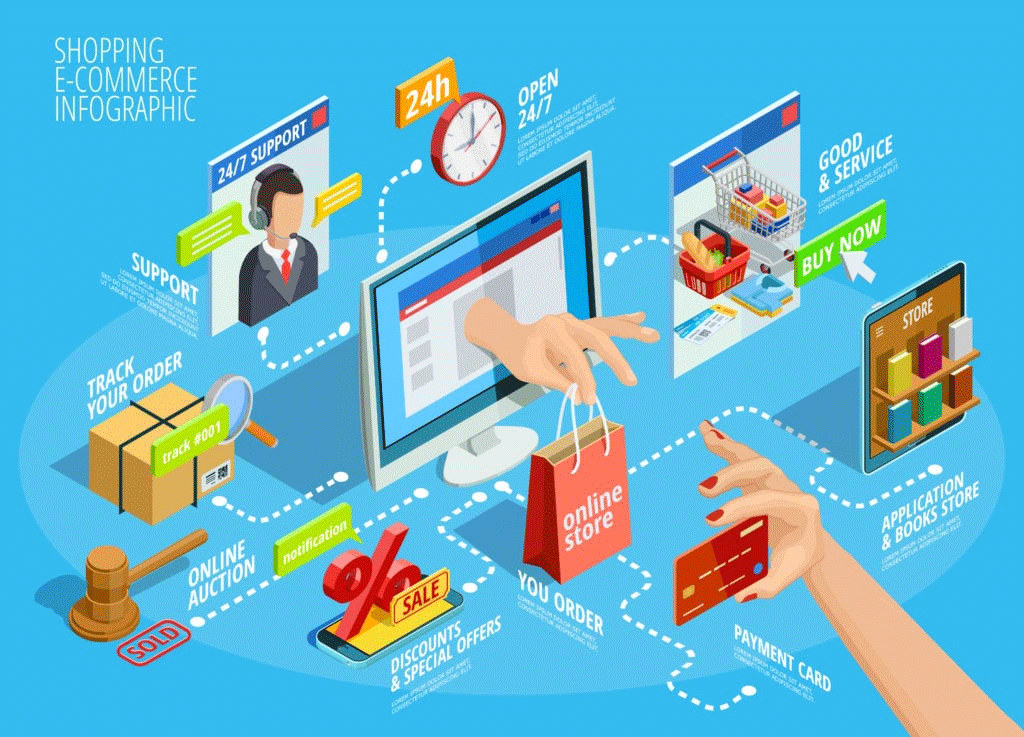How To Start an Ecommerce Business
Starting an ecommerce business can be a rewarding venture, but it requires careful planning and execution. Here's a step-by-step guide on how to start an ecommerce business:
- Market Research:
- Identify your target market and niche.
- Analyze your competitors.
- Determine the demand for your products or services.
- Business Plan:
- Create a detailed business plan outlining your goals, strategies, and financial projections.
- Define your unique selling proposition (USP).
- Legal Structure:
- Choose a legal structure for your business (e.g., sole proprietorship, LLC, corporation).
- Register your business with the appropriate government authorities.
- Business Name and Branding:
- Choose a memorable and relevant business name.
- Create a professional logo and branding materials.
- Domain and Hosting:
- Purchase a domain name that reflects your business.
- Find a reliable ecommerce hosting provider.
- Ecommerce Platform:
- Select an ecommerce platform such as Shopify, WooCommerce, BigCommerce, or Magento.
- Customize your website according to your branding.
- Product Sourcing:
- Decide how you will source or create your products.
- Establish relationships with suppliers, manufacturers, or distributors.
- Website Design:
- Design a user-friendly and responsive website.
- Optimize for mobile devices.
- Ensure fast loading times.
- Payment Gateway:
- Set up a secure payment gateway to accept online payments.
- Consider various payment options, including credit cards, digital wallets, and PayPal.
- Security:
- Implement SSL encryption to secure customer data.
- Comply with data protection and privacy regulations.
- Content and Product Listings:
- Create high-quality product descriptions and images.
- Use SEO best practices to optimize your content.
- Shipping and Fulfillment:
- Determine your shipping methods and costs.
- Set up a system for order fulfillment and tracking.
- Customer Support:
- Provide multiple channels for customer support.
- Develop a clear return and refund policy.
- Marketing Strategy:
- Develop a digital marketing plan, including SEO, social media, email marketing, and paid advertising.
- Build an email list for newsletters and promotions.
- Launch and Testing:
- Test your website thoroughly to ensure functionality and security.
- Set up Google Analytics or other tracking tools to monitor website traffic.
- Scaling:
- Monitor your sales and customer feedback.
- Continuously improve your website and marketing strategies.
- Legal and Compliance:
- Ensure that your business complies with all applicable laws and regulations, including taxes.
- Customer Engagement:
- Build customer trust and loyalty through excellent service.
- Encourage reviews and referrals.
- Analytics and Optimization:
- Use data analytics to make informed decisions.
- Continuously optimize your website and marketing efforts.
- Expansion:
- Consider expanding your product line or entering new markets.
Remember that starting and running an ecommerce business requires dedication, persistence, and adaptability. Keep learning and staying updated with industry trends to remain competitive and successful.
